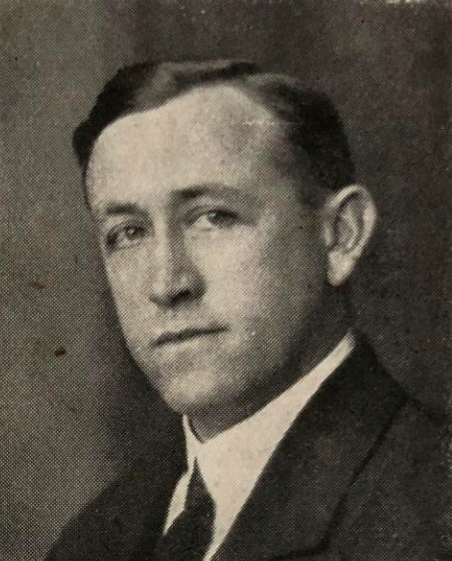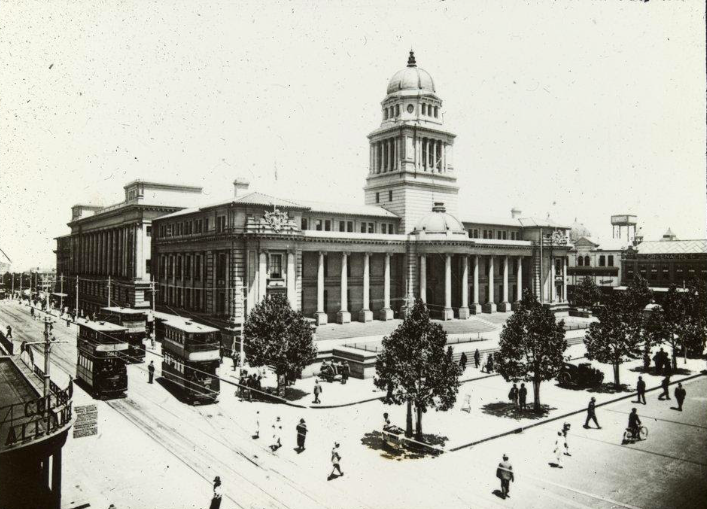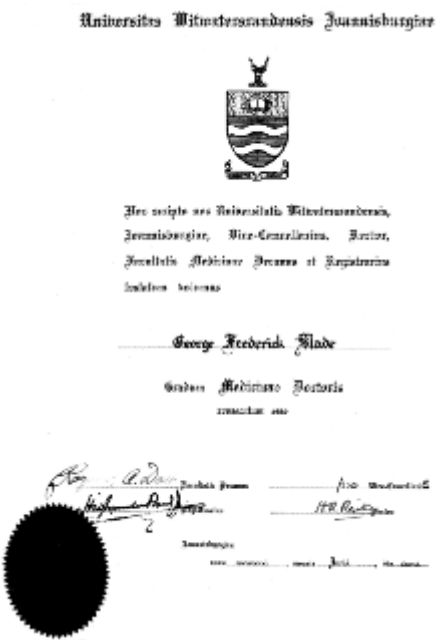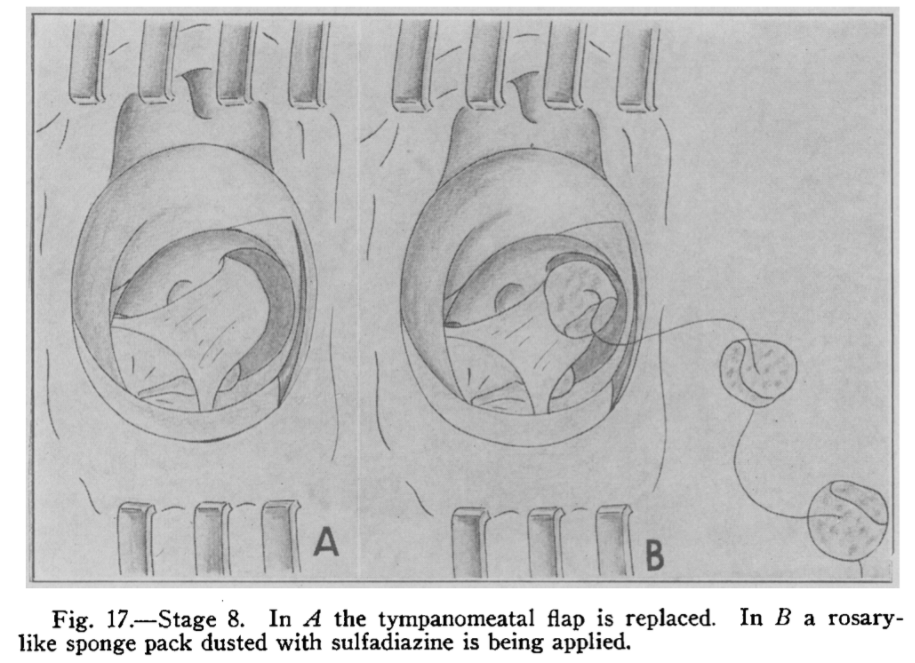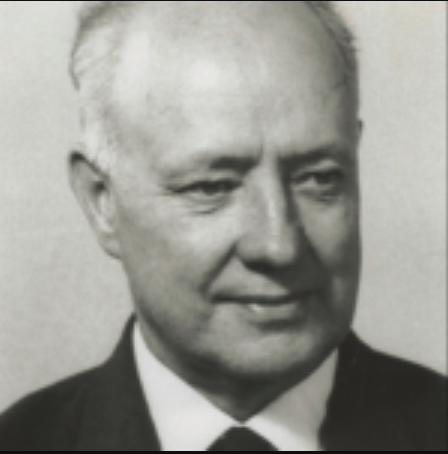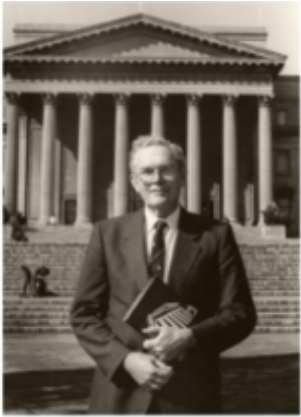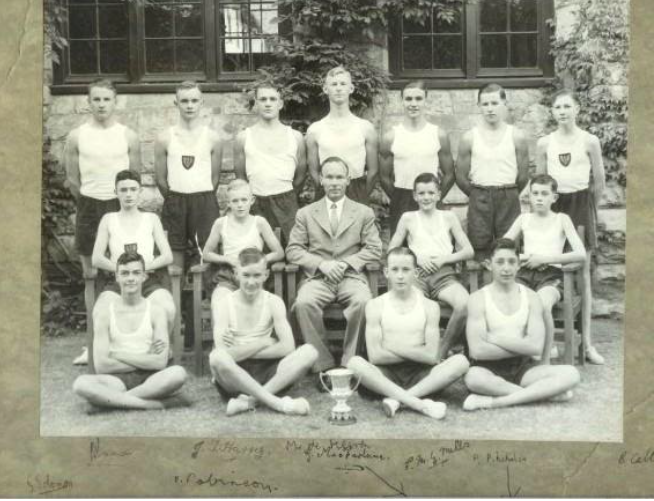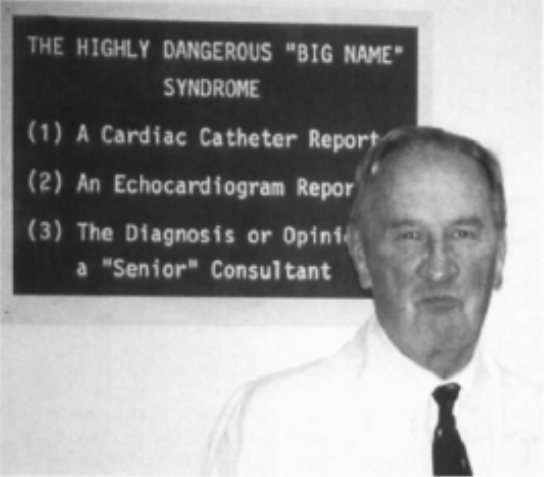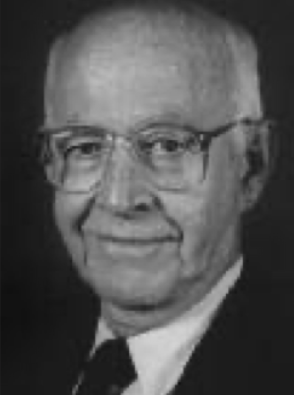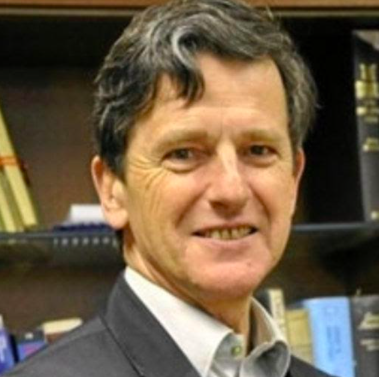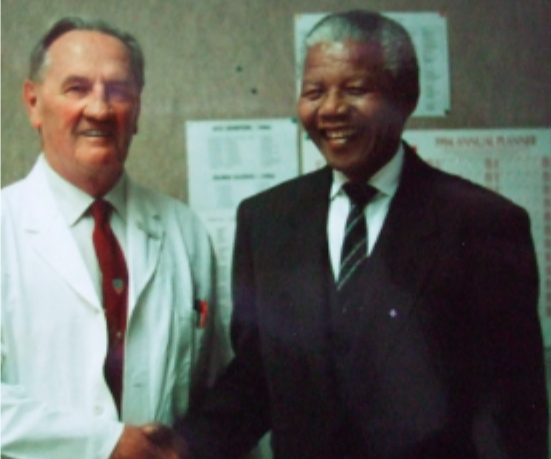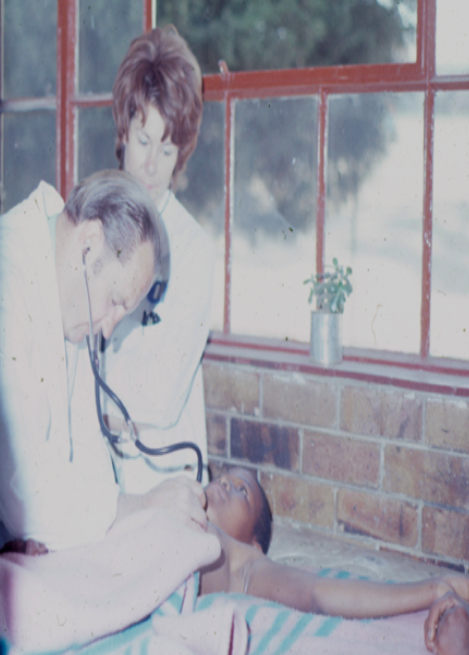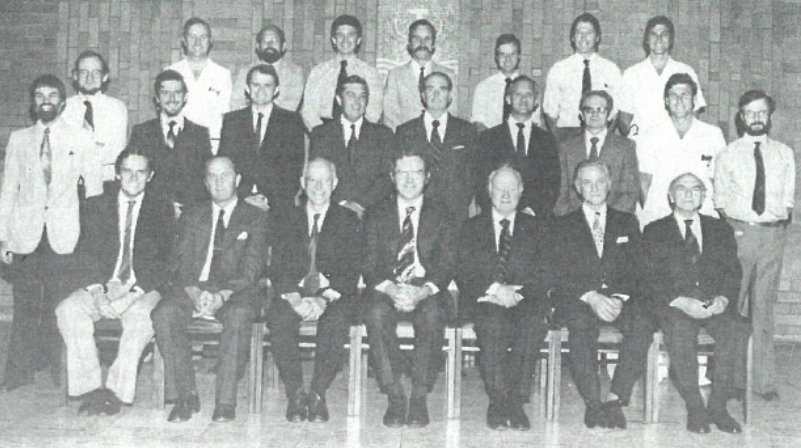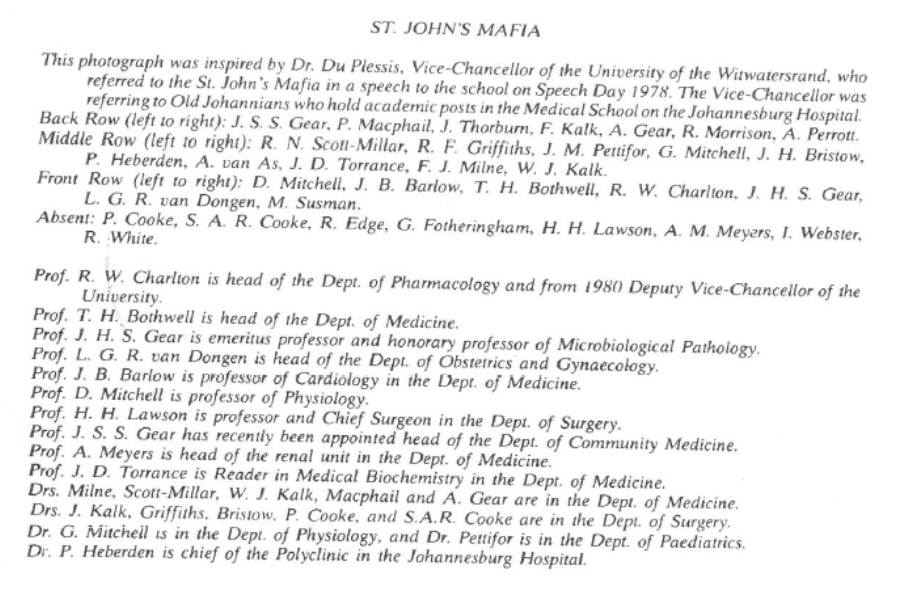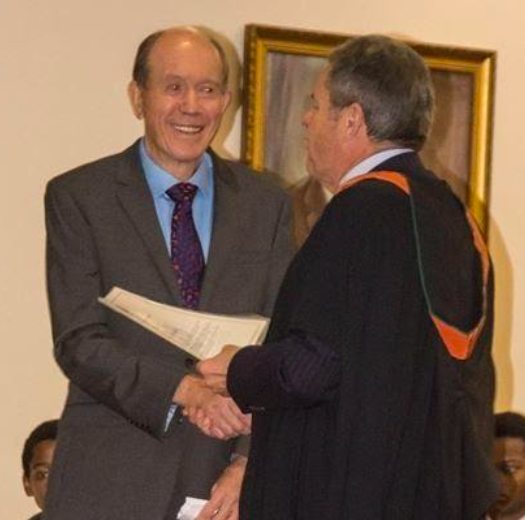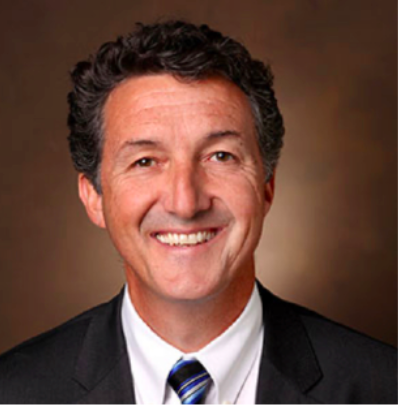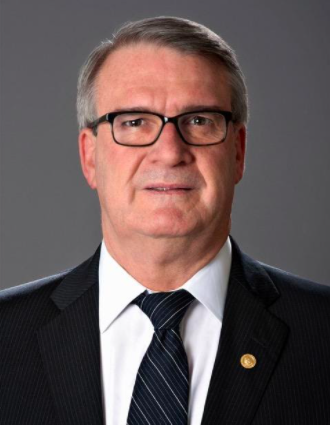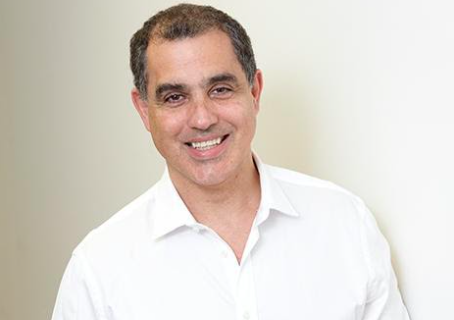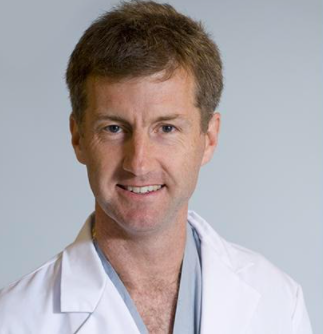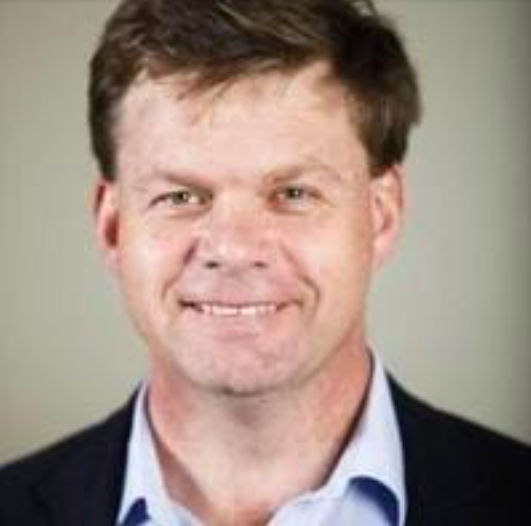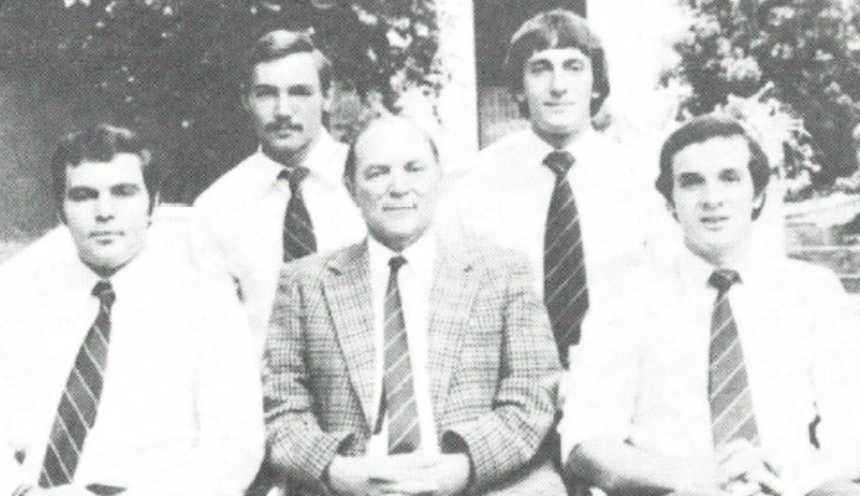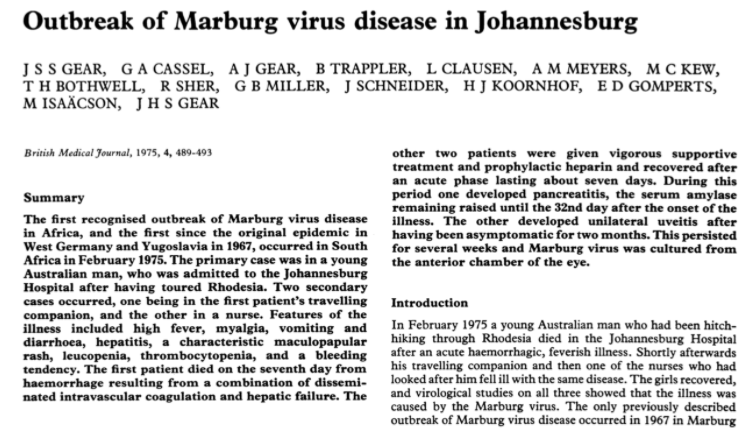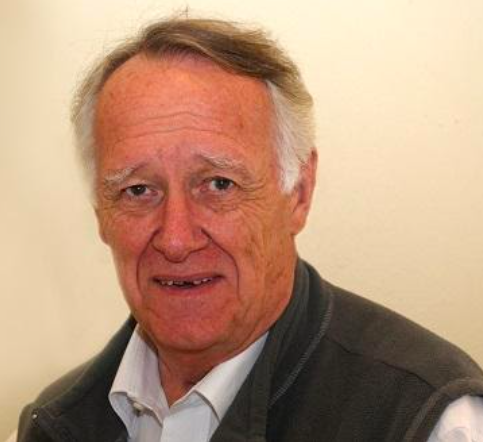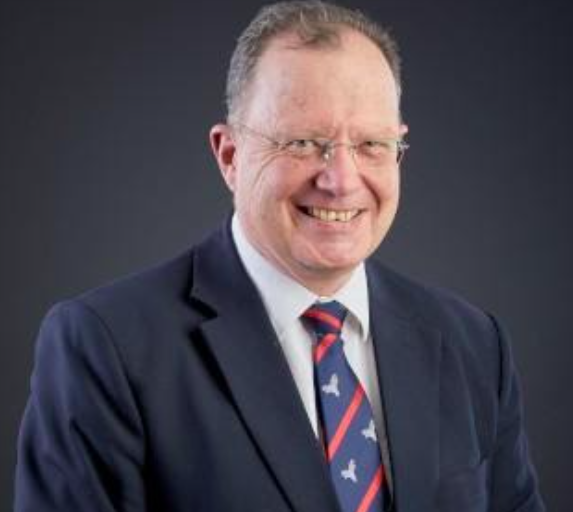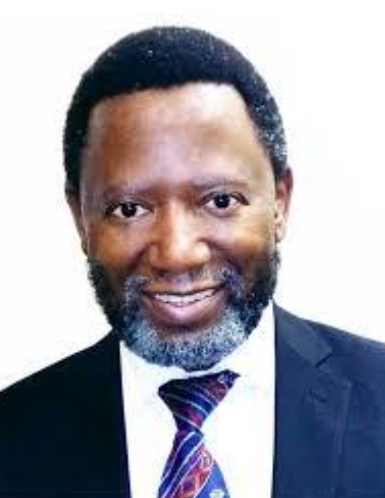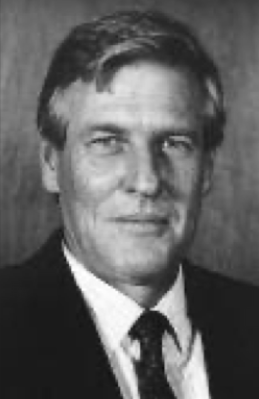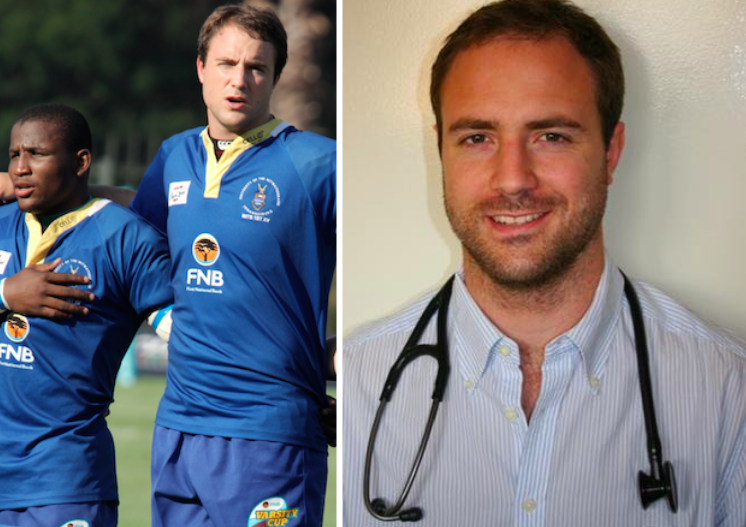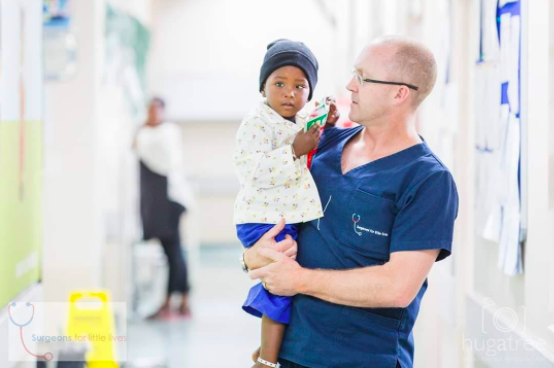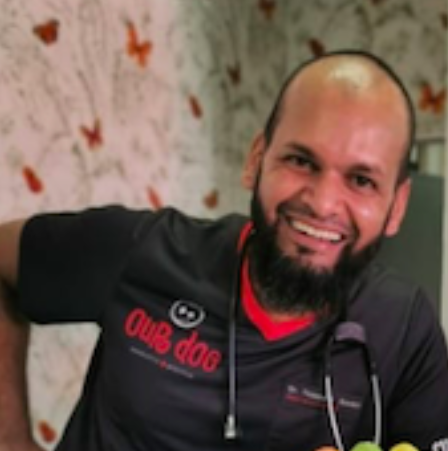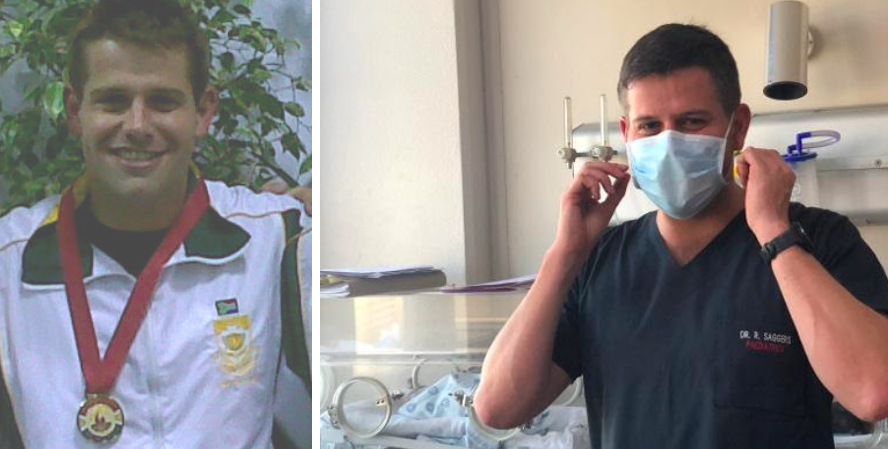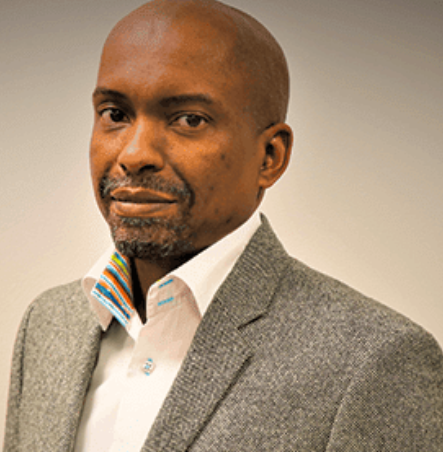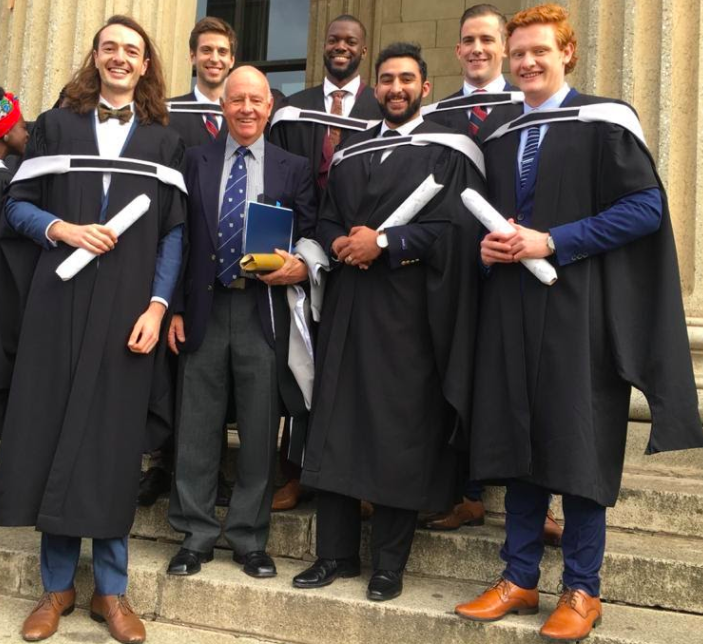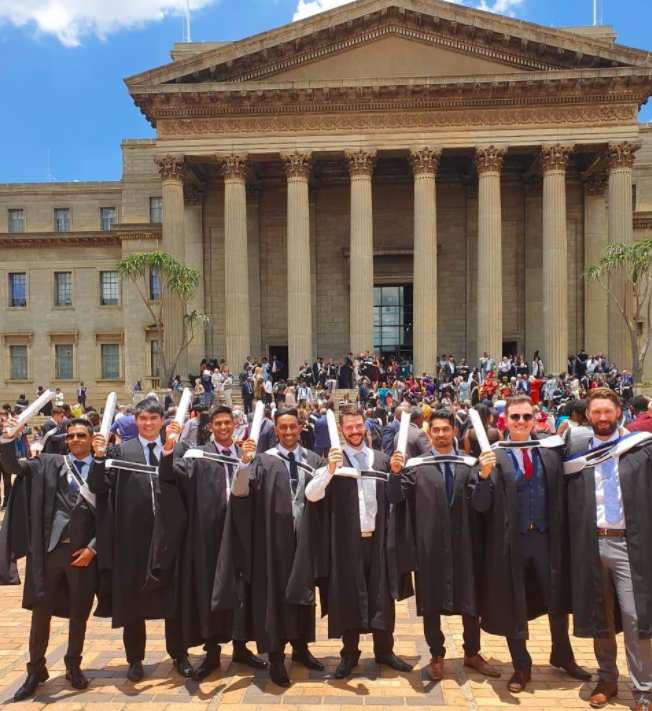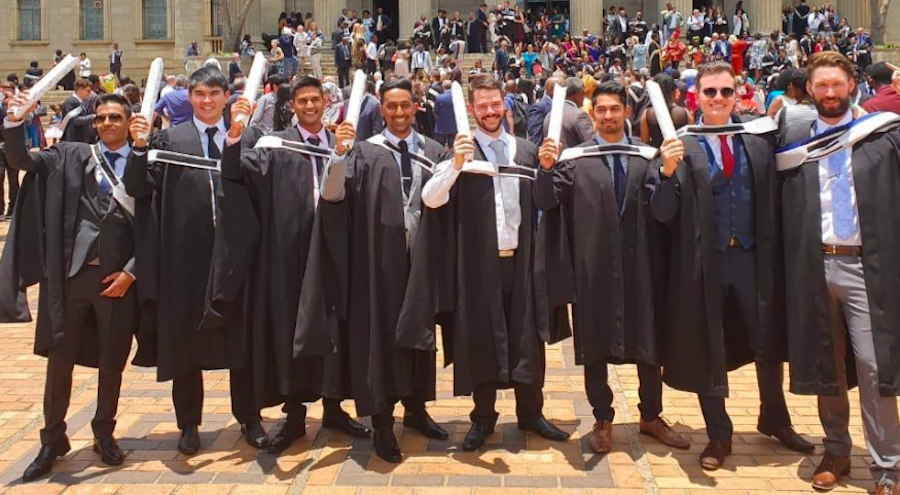
Disclaimer: Any views expressed by individuals and organisations are their own and do not in any way represent the views of The Heritage Portal. If you find any mistakes or historical inaccuracies, please contact the editor.
“In my years as Professor of Surgery at Wits, I have become aware of a disproportionately large number of students, doctors and academics associated with Wits Medical School who were educated at St John’s College. I have come to suspect that there is a St John’s Medical Mafia at work.”
In his address to the College in December 1978, renowned surgeon and then Vice-Chancellor of Wits University, Prof DJ “Sonny” du Plessis, tongue firmly in his cheek, coined the term “the St John’s Medical Mafia”, referring to an incredible production line of Old Johannian medical doctors that has continued, remarkable not only in its number but for its impact on the field of medicine.
Pioneers
The name Isidore Jack Block will probably not mean much to either Johannians or Johannesburgers. Born in 1893, Isidore matriculated from St John’s College in 1909 before leaving for Edinburgh to study medicine. He was the first Johannian medical graduate, specialised as a surgeon and practised at the Hospital for Women, Soho Square, London, Chalmers Hospital in Edinburgh, and Queen's Hospital in Birmingham, before settling in Johannesburg. He was a Member of the Honorary Visiting Staff at Johannesburg Hospital, and a lecturer in Clinical Medicine at the University of the Witwatersrand. One might therefore regard him as the first “mafioso”.
Dr Isidore Jack Block – The first OJ medical graduate (South African Who's Who)
George Frederick Mills Slade, Head’s House, later to become Nash House, 1915, attended St John’s from 1908 and was one of 4 medical students to be the first to graduate from Wits Medical School in 1925. The graduation ceremony was held at the City Hall. He later completed a Doctor of Medicine for his thesis entitled “The incidence of respiratory disability in workers employed in asbestos mining.” It was the first systematic study of the health effects of chrysotile asbestos dust on exposed miners. Having a Johannian as the first medical graduate from Wits proved prescient and a harbinger of a strong link that was to be cemented over the next century.
Early photo of the Johannesburg City Hall
Dr George Slade’s Postgraduate MD Degree (“Our Graduates 1924-2012. The Adler Museum of Medicine”)
A rich line of doctors…
In “The Johannian” (The College’s annual school record) magazines of the 1920’s, 30’s and 40’s, records can be found of several more Johannians studying medicine. Early on, many studied overseas:
- “Charlie Pritchard ‘Boetie’ 1913 is making good progress as a medical student at Edinburgh, after a long spell in the Navy as surgeon probationer during the War.”
- “C Taylor-Brown 1913 returned to Scotland to continue his studies in surgery.”
- “Libero Fatti 1918 is a medical student at the University College, London.”
- “Cecil Carr 1912 has passed his final Medical Exams in London.”
- “Harry Selesnick 1919 is studying Medicine in Scotland.”
- “Gilbert Stanford 1912 is at Guy’s Hospital doing well as a doctor.”
- “Frances Nelson, ‘Judy’ 1926 is now studying medicine at Cambridge.”
- “Hal Watson 1925 has got through his first MB at Cambridge.”
- “Henry Osburn 1927 W 1935 is studying Medicine.”
- “M M Suzman 1920 who qualified as a doctor in England some years ago has recently been awarded a Rockefeller scholarship for 1929-30. After two years at Wits he obtained MB BS at the Durham School of Medicine and MRCS and LRCP at London University. As per the scholarship he will take up residence at Harvard.” (see below)
Records can be traced of 75 Johannians entering medicine from 1910-1930’s.
Johannian medics make an early global impact....
An early example of an Old Johannian demonstrating clinical leadership is that of Dr Otto Popper who matriculated in 1916. He studied medicine in Edinburgh, became a Fellow of the Royal College of Surgeons at the age of 25 and returned to Johannesburg to work at the Johannesburg General and Children’s Hospitals. He went on to head the Department of Otorhinolaryngology (ENT) and gained worldwide acclaim when he described, lectured on, and published his fenestration technique for deafness.
Figure from Dr Popper's seminal paper published in Archives of Otolaryngology, 1949
Dr Libero Fatti (1918) is regarded as the pioneer of cardiothoracic surgery in South Africa. He trained in the UK and USA, then returned to South Africa in 1948, setting up the first thoracic surgery units at Johannesburg general and Baragwanath Hospitals. He pioneered aspects of heart surgery that preceded the first heart transplant. A medal is awarded in his honour by the Colleges of Medicine for the most distinguished candidate in the examination of the College of Cardiothoracic Surgeons of South Africa.
Prof James Gear (Thomson, 1922) was one of South Africa’s most highly regarded doctors internationally and a pioneer in the eradication of infectious diseases. Although best known for his work on the poliomyelitis vaccine (on which he collaborated closely with international colleagues Jonas Salk, Albert Sabin and Tom Weller) in the mid-1950’s, he also discovered the Coxsackie B virus as a cause of infantile myocarditis in 1948 and was a pioneer in describing what we now know as auto-immune diseases. He was a visiting professor in tropical diseases at Harvard and the recipient of numerous prestigious awards in South Africa and internationally. In helping to eradicate polio, James Gear made an immense contribution to humanity.
Prof James Gear (Poliomyelitis Research Foundation)
War Years
A feature of many of the “updates” in The Johannian magazines from 1914-1920, and again from 1939-1945, is the number of young Old Johannians who had their studies and early careers disrupted by war. Isidore Block was a captain in the SAMC, Eric Slade served in the SA Highlanders, C Taylor-Brown in the South African medical Corps (SAMC) and Cecil Carr in the 6th Durham Light, while H Patlansky (Later Patley), Royal Army Medical Corps (RAMC) became a major. From The Star newspaper, “Charlie Pritchard (1913) was appointed to a destroyer in the Dover Patrol in the war and did service in the Mediterranean and the Black Sea, rescuing the fugitives from the advancing hordes of the Bolsheviks at Odessa. He has been a ship’s surgeon travelling extensively, passing through the Panama Canal six times. Charlie will be remembered for his gallant running for St John’s in the Inter-High Championship as well as his conjuring and sleight-of–hand tricks.”
At least 25 Old Johannian doctors served in World War II either as members of the Royal Army Medical Corps or the South African Medical Corps. Captain I McGregor (1939) was awarded the Military Cross for Gallantry in the Desert War and Captain Douglas Lapping was awarded the MBE for evacuating refugees and mobilising to treat 4 800 wounded soldiers.
Wits Medical School – an enduring bond begins
Although Johannians have studied at universities around the country and indeed the world, St John’s bond with Wits Medical School (now the Faculty of Health Sciences) is unusually strong. From the early 20th century, the connection with Wits Medical School became stronger as, following Dr Block, these well-qualified medical graduates took up posts at Johannesburg General Hospital and the Medical School.
“Harold Brayshaw 1913 has accumulated the following degrees after the usual MRCS and LRCP: MB ChB, MD, FRCS and ChM, all at Edinburgh. The latter is the highest degree in surgery that he can take at Edinburgh.”
Dr Brayshaw worked for a time at St Peter's Urological Hospital, London, and went back to South Africa in 1925. There he became assistant to Temple Mursall at the Johannesburg General Hospital, and ultimately Head of the Urological Department. He was elected a Fellow of the International Society of Urologists in 1933, and in 1934 visited many main urological centres in the USA, spending eleven months in the States. On his retirement in 1964 he was elected by the Federal Council of the Medical Association of South Africa to be an Emeritus member of that body by virtue of his long and valuable service to the medical profession in South Africa.
Moses “Mosie” Suzman (1920) was the son of Lithuanian immigrants. He initiated his medical studies at Wits before completing them at the University of Durham, He specialised in the UK before being awarded a Rockefeller Fellowship to Harvard. In the early 1930s he returned to South Africa as a consultant physician, holding part time appointments at Witwatersrand University and Johannesburg General Hospital until his official retirement. His main interests were in nutritional defects, vitamins and cardiology; he developed the use of beta blockers as a means of treating anxiety and hyperventilation long before the technique became generally accepted. He was also a splendid teacher, with an amazing memory - if asked a question he would give a clear reply, backed up by a list of useful references. He did not accept orthodox dogma uncritically and was never afraid to knock the establishment.
But it is in the years subsequent to World War II that Old Johannians seem to have made an even more substantial impact in the field of medicine.
The “Mafia” cohort referred to by Prof du Plessis consisted of OJ doctors and academics associated with the Wits Medical Faculty – over 35 of them at that time. For several decades that followed, most doctors (Johannians or not) would have been mentored by these incredible men, many regarded as maestros…and some as mavericks!
The Wits Department of Internal Medicine is the largest of its kind in South Africa and graduates more physicians and physician subspecialists than any other similar department in the country. From 1967-2005, the Head of the Department of Medicine at Wits was an Old Johannian, starting with Tom Bothwell (Thomson 1941) for 24 years, then John Milne (Hill, 1958) for 8 years and Patrick MacPhail (Thomson, 1962), 5 years. Preceding this Jock Gear (Thomson, 1925) was Acting Head in the 50’s and 60’s, so the Johannian reign actually extends to around 50 years! This period included three Old Johannian Deans of the Faculty: Robert Charlton (Alston, 1945) later to become Vice-Chancellor of Wits, F John Milne (Hill, 1958) and Tom Bothwell (Alston, 1949). Although internal medicine seemed to be a stronghold for Johannians, their reach extended into every specialty – surgery, ophthalmology, obstetrics and gynaecology, paediatrics, ENT and family medicine. Indeed, the influence extended beyond clinical medicine. In particular, the Mitchell brothers, Duncan (Alston, 1959) and Graham (Alston,1962) ran an extremely strong physiology department that provided the sound grounding for which Wits medical graduates were known.
The “Mafia” – famous names
A short article such as this risks leaving out the names of many who have significantly impacted their field in a quite incredible era of Johannian academic doctors and personalities who had a profound influence on medicine in Johannesburg and beyond. Some of the those who made an impact and mentored many include:
Prof Robert Charlton (Alston, 1945), appointed Professor and Head of the Department of Experimental and Clinical Pharmacology at Wits in 1967, and part-time Senior Physician at the Johannesburg Hospital. He was elected to the Fellowship of the Royal College of Physicians in Edinburgh in 1968. In 1969 he was awarded the Carnegie Travel Grant to study the teaching of pharmacology in the United States. After serving as Dean of the Faculty of Medicine in 1978 and 1979, he was appointed Deputy Vice-Chancellor of the University in 1980. In 1983 he became Vice-Principal and in 1988 Vice-Chancellor and Principal.
Prof Charlton – Physician, Dean, Vice-Chancellor and Principal of Wits (Wits University)
Prof John Barlow (Thomson, 1941) – renowned clinician and researcher who described Barlow’s Syndrome, a mechanical failure of the mitral valve, gaining himself a place amongst the world’s most famous cardiologists. He was well-known for his rejection of dogma, something that advanced his career as a scientist but didn’t always go down as well at St John’s! Tom Bothwell recalled: “He once lit a cigarette in front of the school masters… and continued to flout authority for most of his life.” "Current dogma should always be questioned and challenged” was apparently an often-heard phrase whilst, on a plaque outside the cath lab of his clinic he wrote “It is my hope that members of this staff will always question that which appears to be obvious, and clarify whatever is not understood.”
John Barlow (Back row, first from the left) as a member of the College athletics team (St John's College)
Prof John Barow, Internationally renowned cardiologist (Dr David Jankelow)
Prof Tom Bothwell (Alston, 1941) – physician par excellence, known as much for his caring bedside manner as for his groundbreaking research into iron metabolism; his unassuming and modest nature belied the influence he had as a teacher to generations of Wits students registrars and consultants, and his stature as an internationally collaborative researcher. In describing his wonderful bedside manner, one of his professorial successors described him as “the doctor we all aspired to be”. Tom Bothwell’s major research contribution to medicine was his work on iron metabolism. Iron Metabolism in Man (co-authored by Bob Charlton and two American experts) remains essential reading for researchers on iron four decades after its publication. Together with his research associates, some of whom were Old Johannians (Bob Charlton, John Torrance, Merlyn Sayers and Patrick MacPhail), he unraveled the causes and consequences of African Iron Overload and showed the importance of diet in iron deficiency. This has been the foundation of iron fortification programmes throughout the world. A committed Johannian, Prof Bothwell served for years on the College Council.
Prof Tom Bothwell - “The doctor we all aspired to be…” (Our Graduates 1924-2012. The Adler Museum of Medicine)
Prof ‘Buddy' Lawson (Hill, 1944) – uplifted surgery at Baragwanath Hospital where he established what remains the country’s premier Burns Unit and enhanced our understanding of peptic ulcer disease through his research. He was Professor of Surgery and Chief Surgeon and Head of the Department of Surgery at the then Baragwanath Hospital in 1971. He remained in that position until his retirement in 2000.
Prof Neville Welsh (Nash, 1947) was Wits Professor of Ophthalmology from 1975-1984 and oversaw the training of many world-class ophthalmic surgeons. He worked until 2013 when he retired at the age of 83.
Prof Tony Meyers (Hill, 1950) prominent professor of nephrology, visiting scientist to the Mayo Clinic in 1974, director of the Wits Renal Unit from 1975, past president of the African Nephrology Society and executive committee member of the Kidney Foundation.
Prof Patrick MacPhail (Thomson, 1962) After serving as a medical officer on Impala Platinum mines in 1973-4, Patrick MacPhail specialised in internal medicine in the Wits group of hospitals, obtaining his FCP in 1977. He carried the baton for iron research completing his PhD on “An Approach to the Measurement of Iron Status and the Prevention of Iron Deficiency" (supervised by Tom Bothwell) and climbed the academic ranks from senior lecturer to being appointed a full professor and Chief Physician in 1992. Patrick played an integral role in redesigning the medical curriculum and, in the true tradition of “The Mafia”, is a strong advocate of Clinical Bedside Teaching.
Prof John Gear (Thomson, 1960), awarded the College’s Eagle Award in 2018, has had a remarkable career in Community Health and public service. He was the youngest full professor in the Faculty of Medicine at Wits. To say that he was Chief Specialist and head of Community Health at Wits from 1979-1991, and Academic Director and Professor Assignatus, Wits Rural Facility does little justice to this Oxford Nuffield Research Fellow, great Johannian and committed South African, who has dedicated himself to the training of young colleagues, serving under-resourced communities and uplifting public health. He was awarded an honorary Doctor of Science in Medicine degree by Wits in 2017.
Prof John Pettifor (Thomson, 1962) was Director of the Metabolic Unit in the Department of Paediatrics at Chris Hani Baragwanath Academic Hospital and a leading international scholar in the areas of infant and childhood nutrition, bone development and rickets. Prof Pettifor is not only one of the most distinguished researchers in the Faculty of Health Sciences but is also highly regarded as a teacher, clinician and administrator. Following sterling academic achievements, John began his research career in 1974 as a researcher in the Metabolic Unit in the Department of Paediatrics at Chris Hani Baragwanath Academic Hospital in Soweto. The entity was awarded “Unit” status by the South African Medical Research Council in 1985 when John Pettifor also became its Director, a position he held until his retirement in 2010. Since his retirement he has been the Director of the Carnegie Clinical Fellows programme in the Faculty of Health Sciences. He was awarded an honorary Doctor of Science in Medicine degree.
Prof John Pettifor (Researchgate.net)
The aforementioned names represent only a handful from that generation. There were over 20 more Wits-associated distinguished academics, clinicians and researchers, collaborating in a teaching network that made for one of the world’s great medical teaching milieus. Steadfast, dogged and principled; clinicians, researchers and teachers all in one, with different fields of interest … but all from the same school. Professors Charlton, Bothwell, Gear and Pettifor, together with paediatric neurosurgeon Warwick Peacock, have received the College’s Golden Eagle Award, an annual accolade bestowed on Old Johannians who have distinguished themselves in their field and in life.
A mafia that sought social justice
Significantly, the “Mafia” generation worked during the years when the Apartheid government tightened segregation laws. Their resistance to discrimination and determination to offer quality medical care to people of all races is demonstrated in many deliberate acts of protest.
John Barlow had to withstand considerable government criticism for a publication in the British Medical Journal citing evidence that the poor socio-economic conditions of Black people increased the incidence of rheumatic valve disease. “For a number of reasons, we and others have to date failed to institute effective primary and secondary rheumatic prophylactic programs. We remain pessimist about anticipating a reduction in the high prevalence of rheumatic carditis in our Black population, until socio-economic factors improve. We favour that malnutrition and infection during the first year of life are important.”
Prof Barlow was the cardiologist of choice for many – including President Mandela (Dr David Jankelow)
Prof Barlow conducting the Rheumatic Valve Disease study (Dr David Jankelow)
Mosie Suzman, disturbed by the inequalities he witnessed in the Public Health Service, actively supported his high-profile wife Helen in her resistance of the changes brought by the Nationalist government.
The Gear brothers (see below) were very active in their support of a more equitable health system, the upliftment of Baragwanath Hospital (Jock Gear was Chairman of the Bara Board) and the support of the injured and bereaved following the Sharpeville massacre. Decades later, John Gear continues to play an important role in improving the lives of poor, rural black South Africans. In the late 1980’s he led a Wits delegation out of a national public health meeting of universities in protest at a Black UCT delegate not being allowed to use the resort’s swimming pool.
Patrick MacPhail supported progressive politics as Chairman of the Houghton Young Progressives and the Bryanston constituency. Mentored by Tom Bothwell, his research focused on dissecting out the causes of African Iron Overload.
In 1989, mass voluntary total fasting began as a form of political protest at the Johannesburg Prison. Professor WJ (John) Kalk (Thomson, 1959) and his colleague Prof Y Veriava refused to allow patients to return to prison after recovery in the belief that indefinite remand in custody without trial is torture. This became known as ‘Kalk’s refusal’. Some detainees escaped during their stay in the Johannesburg Hospital. Two of the most celebrated of these were UDF leaders who had been made Wits honorary students. After the escapes, the security police ordered that those prisoners be manacled to their beds but Kalk refused to allow this.
Jealous murmurs
The “Mafia” label was well-known outside of Johannian medical circles and would sometimes be somewhat disparagingly mumbled under the breath of a consultant, “unfortunate” enough to have attended another school: “He’s another member of the mafia you know”. The photograph below, inspired by Prof du Plessis’ quip, was removed from the walls of the new Medical School by none other than Tom Bothwell who felt it created ill feeling amongst colleagues regarding the influence Johannians had in the faculty. But few could refute their inspiration of a golden era of South African medical practice, research and teaching.
The “St John’s Mafia” (The Johannian Magazine, 1978)
What each of these fine clinicians achieved in their own careers is noteworthy, but their greatest contribution is surely their teaching which has left a legacy of medical excellence in Johannesburg and across the globe many, of course, Johannians.
Noteworthy Johannian Medical Exports
Over decades, OJ doctors have studied, practiced, researched and taught in many countries around the world. Several have achieved great success in some of the finest medical centres in the world.
Professor Warwick Peacock (Nash, 1958), was honoured with the College’s Golden Eagle Award for his contribution to South Africa and the world as a pioneering paediatric neurosurgeon. Prof Peacock is internationally recognised for having developed a safe and effective surgical procedure now used widely to treat spasticity in children who have cerebral palsy. He has had an extraordinary and ground-breaking career where he has helped thousands of children whose underlying medical issue was neurological but treated as skeletal or muscular. Had he not devoted his focus to this, many of these youngsters might have been condemned to a highly restricted, painful childhood and adult life.
Prof Warwick Peacock receiving his Golden Eagle Award from then Headmaster, Paul Edey (St John’s College)
More recent examples include two US-based plastic surgeons - Don Mackay (Clayton, 1970), Professor of Plastic Surgery at Penn State Hershey College of Medicine and President of the American Association of Plastic Surgeons, and Galen Perdikis (Thomson, 1982), Chairman and Professor of Plastic Surgery at Vanderbilt University Medical Centre. Interestingly, Don’s brother-in-law, Greg Ash (Hill, 1976) is also a plastic surgeon in Umhlanga, KZN. Don pioneered the establishment of a world class multidisciplinary reconstructive surgical centre while Galen’s work focuses on reconstructive surgery for women who have suffered from breast cancer.
Dr Galen Perdikis (Vanderbilt Univ Med Center)
Dr Don Mackay – Penn State (US News Health)
Others who have made a success internationally include Stephen Fasulakis (Clarke, 1982), a UCT-qualified radiologist who practised at Great Ormond Street and Royal Children’s Hospital, Melbourne. He was awarded a travelling professorship to Boston Children’s Hospital (Harvard) and Toronto Hospital for Sick Kids in 2005-6. Stephen now owns Diagnosticare, the key imaging hub in the Western Suburbs of Melbourne.
Dr Stephen Fasulakis, Radiologist, Melbourne (Diagnosticare.com.au)
Paul Firth (Nash, 1985) is a paediatric anaesthetist based at the Massachusetts General Hospital and Harvard Medical School, Boston, USA. An adventurer at heart he published a fascinating paper in BMJ on deaths on Mount Everest.
Dr Paul Firth, Anaesthetist, Harvard (Massgeneral.org)
Richard Sparks (Clarke, 1989) is an anaesthetist in Whanganui, New Zealand. For many years Richard’s father Bruce Sparks (read below) was the College doctor before becoming Professor of Family Medicine at Wits. This post is now held by Old Johannian Richard Cooke (Nash, 1985). Richard is the son of surgeon Stan Cooke (Nash, Head of School, 1950) and nephew of vascular surgeon Paul Cooke (Thomson, 1956).
Prof Richard Cooke - Current Head of Wits Dept of Family Medicine (Richard Cooke)
St John’s Medical Families
The de Kock’s are a distinguished Johannian family. The family produced 5 heads of Thomson House – Robert, Peter, John, Gavin Routledge, Mike Spicer and 1 Head of School - John. They have contributed significantly to medicine. Robert’s father was a specialist eye surgeon and graduate of Edinburgh University. Bob (second generation medic) , John and Pete de Kock (third generation) qualified in South Africa. The family also included Harold Wolsey Spicer a GP and father of O. J. Mike Spicer, cousins William Girdwood surgeon and Wits Medical School lecturer in the 1940's and 50’s, and Rob Girdwood, his son a cardiothoracic surgeon at Milpark Hospital. Spicer and Girdwood were brothers in law. Robert loved school rugby and was the regular match doctor for many years until his health failed. He donated the bricks for paving of “Long Walk”, the path extending along the northern facade of the College buildings from the Prep to the swimming pool.
De Kock / Spicer Family (The Johannian Magazine 1975)
The Gears
Prof James Gear’s exploits in the field of tropical disease were not the end of the family’s contribution to medicine. Harry Gear (1917-1919), James’ brother, was the first of 4 generations to attend St John’s and Thomson House. Harry was to become an Assistant Director of The World Health Organisation and Secretary General of the World Medical Association. Then came James (1919-1922) and Jock Gear (1922-1925). All three boys attended Germiston High before being awarded Open Academic Scholarships to St John’s. All three also won the medal at Wits Medical School for best performing medical student. James had four sons, John (1950-1960), Anthony (1953-1963), David (1954-1965) and Spencer (1960-1971).
John and Anthony studied medicine at Wits (attending lectures by their father) and specialised in internal medicine. Interestingly, John completed his houseman year in OJ Dr Mozie Suzman’s ward at Joburg Gen. At Medical School, the three were known as “High, Middle and Lower Gear”!
Of their famous father, the Gears of the “polio” (2nd) generation write: “Our father was famous; we didn’t fully comprehend why until much later. The whole school lined up to get little sugar squares with a drop of vaccine on it. As brothers we had already had the vaccine tested on us, so probably did not need an additional dose, but I think it was thought to be good PR for us also to take part.”
Russell Gear (Alston 1983-1988) represents a 3rd generation of St John’s Gears and is a clinical geneticist in New Zealand, whilst Adam Gear, currently in Upper V (Matric) in the College is the 4th generation. In 1975, to address an outbreak of Marburg Fever, a senior committee of clinicians, nursing and Hospital management were assembled, and the team was led by James Gear. “The Mafia” was well represented in this critical Clinician Advisory Group and included three Gears, James, Anthony & John, Tom Bothwell, Tony Meyers and John Barlow. Currently Prof John Gear is deeply involved in managing the COVID-19 surge at Tintswalo Hospital in Acornhoek. He is probably the only clinician in the world to have been involved with the three major epidemics of Polio, Marburg and COVID-19. Doing his community service and assisting John is Alistair Bashall a newly graduated Wits doctor and Old Johannian (Clarke, 2011).
Publication on Marburg Fever in British Medical Journal co-authored by 5 of “The Mafia”
Extended family…
And then there are those that have become family. Prof Bruce Sparks was the school doctor for nearly 30 years from 1974.
Prof Bruce Sparks - School Doctor and Head of Family Medicine (Bruce Sparks)
As mentioned, his son Richard, an anaesthetist, matriculated in 1989. The most recent Dean of the Wits Faculty of Health Sciences, Prof Martin Veller (an alumnus of the Deutsche Skule, JHB) put two sons through St John's, was Chairman of the Parents' Association and has served two terms on the College Council. He has most recently helped guide the College through the COVID-19 pandemic. Former head of the Division of Paediatric Surgery at Wits, Prof Michael Davies’ (Pretoria Boys High) son John Davies (Thomson, 1987) is now a pathologist in Cape Town. The Head of the Department of Orthopaedics, Prof Mmampapatla "Billy" Ramokgopa (Setotolwane Teachers’ Training College - an incredible medical journey worthy of its own story!) has two Old Johannian sons who matriculated in 2012 and 2016 and another in Upper 2 (Grade 4).
Prof Martin Veller - Recent Wits Dean of Health Sciences (Wits Health)
Prof Mmampapatla “Billy” Ramokgopa (Wits)
They continue a long association of doctors and Wits Health Sciences academics making St John’s College the school of choice for their sons. Through their unfailing support and loyalty to our College, their blood can also be said to run blue.
Student torchbearers
Many Johannians at Medical School have contributed in several facets of faculty life including sport and student representative bodies such as the Medical Students’ Council (MSC) and SRC. Over the years the Medical Students’ Council, SRC, Sports Committees and student extra-curricular ventures have been led by Johannians. In both 1991 and 1992 at Wits, an unusual situation existed where 5 leadership positions were held by Old Johannians:
- Vice Chancellor – Bob Charlton
- Dean of Medical Faculty – John Milne
- Head of Dep Medicine – Tom Bothwell
- President of the MSC – Jon Patricios (Clayton, 1986) followed by John Davies (Thomson, 1987)
- Medical Rep on SRC – Jeremy Rossaak (Thomson, 1987) (now an academic surgeon at the University of Auckland)
Prof FJ Milne, Dean 1990-91. One of a number of Johannian leaders at Wits in the 1990’s (Our Graduates 1924-2012. The Adler Museum of Medicine)
Currently Connor Mercer (Hill, 2016) and Lexi Pullinger (Runge, 2017) are executive members of the Students’ Surgical Society. Charles Baggot (Clarke, 2007), currently a surgical registrar at Wits, served as the Wits Rugby doctor after playing several seasons for the Wits First Team.
Dr Charles Baggot - Rugby Player and Doctor (Wits.ac.za/sport and Charles Baggott)
New leaders emerge….
Encouragingly, St John’s College’s influence on medicine has not ended with the “Mafia” generation. We are accumulating a database of active Johannians in the profession that currently lists over 250. Some have succeeded internationally but, encouragingly, a large cohort remain in South Africa and Johannesburg. Many of these are leaders and very influential in their fields.
Jerome Loveland (Nash, 1990) is Professor and Academic Head of Paediatric Surgery at Wits, growing the department to into the country’s leading paediatric surgical unit. Jerome’s initiative “Surgeons for Little Lives” has raised R50 million towards the medical care of children in disadvantaged communities. His contribution is inspirational.
Prof Jerome Loveland – Paediatric Surgeon
Yazeed Seedat (Alston, 1995) is a paediatrician practising in Soweto. He is the father of 3 Johannians, and is involved in several community projects, the most recent of which is SIM O24U – an initiative to provide oxygen to patients suffering from COVID-19.
Dr Yazeed Seedat delivering COVID Oxygen
Paediatrician Robin Saggers (Alston, 2003) is a Fellow in Neonatology at the Charlotte Maxeke Johannesburg Academic Hospital. His interests include critical care and ventilation of newborn and paediatric patients. He has been the senior doctor responsible managing patient and mother care protocols over the COVID-19 pandemic. Robin is also an accomplished open water swimmer and national lifesaver.
Neonatologist Dr Robin Saggers - a lifesaver in more ways than one (Images – customkayaksblog.wordpress.com and St John’s College)
Paediatrician and Infectious Disease expert Associate Professor David Moore based at Chris Hani Baragwanath Hospital, was the first to suspect a listeriosis outbreak in 2017 and worked with the National Institute for Communicable Diseases to link the food-borne disease to polony in what was a high profile case nationally.
Emeritus Prof Neville Welsh is surely delighted that Johannians continue to carry the baton for his specialty: Thekiso Selele (Nash, 1992) specialised in ophthalmology at Wits, has worked in the UK and South Africa and runs very successful practices in Waverley, and the Brenthurst Clinic, Johannesburg.
Dr Thekiso Selele – Ophthalmologist (3sixtyhealth.co.za)
…and more Johannian medics graduate
The Johannian medical student conveyor belt that started 100 years ago, continues. In 2019 ten Old Johannians graduated as medical doctors from the Wits Faculty of Health Sciences. In a country and world of seemingly increasing disparity and social divide, the responsibility of this generation remains as significant as it was during the Great War, the polio epidemic and Apartheid. Due to the ongoing commitment of the current Dean and academics, the Faculty finds itself entrenched well within the top 100 Medical Schools in the world, in a position to make a meaningful impact.
A 50 Year span of Johannian Wits Medical Graduates - 2017 Wits Graduates with Prof John Gear (MBBCh 1967) who received his Hon DSc (John Gear)
2019 Wits MBBCh Graduation: 8 of the 10 Wits OJ Graduates (Old Johannian Association)
A legacy to treasure
The contribution of Johannians to medicine, only briefly honored on these pages, is truly noteworthy. What connects over 100 years of St John's doctors, from the Parktown Ridge to Penn State, from the Blocks to the Bothwells, the military majors to the medical mavericks? Can it perhaps be the distinctively Renaissance “body, mind and character” ethos of a St John’s education that provides the preparation for a life in medicine?
The St John’s motto is “Lux, Vita, Caritas” (Light, Life and Love). Although an eclectic cohort, three characteristic threads consistent with this dictum seem to feature in each biography explored:
- Mentorship – the transfer of knowledge between generations of doctors - at Wits, across South Africa, and with significant academic contributions internationally; Old Johannian medics have indeed spread light.
- Resilience – Apart from a commitment to medicine and research in South Africa and abroad, a tenacity in tough times (World Wars, segregated Apartheid teaching hospitals and competitive international environments); many of these characters have been larger than life Renaissance men impacting the lives of countless patients and colleagues.
- Devotion - to medicine, their university and mankind; significantly, to addressing areas of critical need and uplifting under-resourced communities in South Africa; these are doctors that demonstrate the virtue of caritas in its true theological interpretation of love.
Whether maverick, mentor or medical maestro, one hopes that the Johannian influence remains – in student endeavours, in emerging academic leadership, in our social conscience and, inspired by that famous “Mafia” generation, in weaving into patient care the philosophy of Lux, Vita and Caritas.
With immense thanks to:
- Mrs Jenni Millward – the conscientious College archivist and museum curator
- Ms Jana Doyle - Old Johannian Association for database access
- Mr Sepeke Sekgwele – Curator, The Adler Museum
- Mr Paul Edey, former Headmaster and fountain of historical knowledge
- Dr David Jankelow for his tribute to Prof Barlow
- Professors John Gear and Patrick MacPhail for their ongoing personal communication and insights on “The Mafia”
- The 300 Old Johannian doctors who have responded with information
- And most importantly…to all our teachers and mentors who made privileged journeys through St John’s College and medicine possible
About the author: Jon Patricios (Clayton, 1986) is a Sport and Exercise Medicine Physician and Professor of Sport and Exercise Medicine at Wits Sport and Health (WiSH), Faculty of Health Sciences, Wits University.
Comments will load below. If for any reason none appear click here for some troubleshooting tips. If you would like to post a comment and need instructions click here.

